
10 Key National Security Challenges in 2015
The United States and its allies are going to face a variety of challenges on the international stage in 2015, many will take forward the situations that arose in 2014, but others are long term strategic issues that if not begun to be resolved will create further more serious consequences in the years to come.
Here is a list of what I believe are the top ten national security challenges the United States will face in 2015 (in no particular order):
1. Helping the Middle East Secure its own Future
2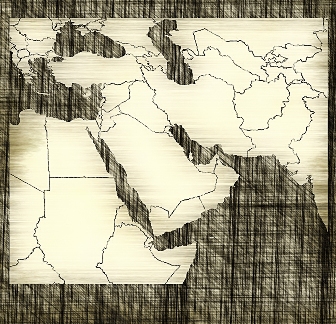 014 saw the bursting on to the international stage of what Australian PM Abbot calls the “ISIS death cult” which accentuated the destabilization in Syria and also took control vast parts of Iraq. The year also saw more brutality from Al Qaida and its affiliated as well as almost 10 million people being displaced across the region. Smaller armed conflicts arouse in Yemen, Libya, Israel/Palestine and other parts of the Middle East.
014 saw the bursting on to the international stage of what Australian PM Abbot calls the “ISIS death cult” which accentuated the destabilization in Syria and also took control vast parts of Iraq. The year also saw more brutality from Al Qaida and its affiliated as well as almost 10 million people being displaced across the region. Smaller armed conflicts arouse in Yemen, Libya, Israel/Palestine and other parts of the Middle East.
The year also saw good news in the Middle East with stability restored to Egypt, as well as Gulf countries joining together in a mutual security pack.
All these issues stem from key concepts of self-determination and more importantly economic opportunity. According to a 2014 World Bank report the Middle East and North Africa (MENA) would need to create 100 million jobs by 2020 in order to sustain the present rate of unemployment. At the same time, the youth population is soaring. The IMF reported a MENA youth unemployment figure of around 25% – the highest in the world. Coupled with this vast unemployment, income inequality is growing, now at 38% regionally. As one Egyptian leading industrialist said in 2014: “amongst the region’s youth, it is a common belief that they are being forgotten, that they are being sidelined and that their governments do not care about their future. “
It will be vital in 2015 for the United States and its allies to assist Middle East leaders in setting out a popular and stable vision for their region and peoples. This vision has to be centered around a vast economic transformation – to increase job opportunities, improve infrastructure across the region, support the non-oil rich countries economic growth, and invest in all levels of education.
The West should not impose or take control over these issues, we may be fast, we may have the template to do these kinds of things, but it is more important for the countries in the Middle East to take ownership of the problems they face – and conduct the changes they need themselves.
2. Countering Cyber Terrorism.
 The cyber terrorist attack on Sony in Nov 2014, whether that be by North Korea or a group of like-minded individuals, resulted in not just the stealing of data and financial details, much of which embarrassed company managers and titillated the gossip industry, more importantly Sony was forced to pull back from showing a satirical film in its planned way because of the pressure from the terrorists.
The cyber terrorist attack on Sony in Nov 2014, whether that be by North Korea or a group of like-minded individuals, resulted in not just the stealing of data and financial details, much of which embarrassed company managers and titillated the gossip industry, more importantly Sony was forced to pull back from showing a satirical film in its planned way because of the pressure from the terrorists.
This has set a very dangerous precedent. As President Obama stated in his final press conference in 2014 “If somebody is able to intimidate folks out of releasing a satirical movie, imagine what they start doing when they see a documentary that they don’t like, or news reports that they don’t like.” This will have consequences for firms that produce products and services and also for national political processes – all of which can be subject to cyber terrorist attacks.
2015 will be key to bring a whole-of-government response and international consensus on what to do with cyber terrorists, whether they are rogue-nations or non-state actors. Cyber terrorism may have been inflected first in the United States, but every industrial country – from the EU, to China and even Russia should be concerned.
The United States, with its international partners must put together a new set of instruments to deal with these terrorist, which must include cyber counter attacks, financial constraints, and could even include targeted military operations.
3. What to do with Putin
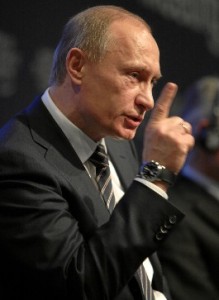 Russia and the Putin regime failed to take the opportunity offered by the United States for a reset in relations. This has been compounded by Russian aggression on almost all of its boarders – include the seizing of parts of Ukraine, failure to confront the Assad regime and more important for Putin, failure to modernize its economy.
Russia and the Putin regime failed to take the opportunity offered by the United States for a reset in relations. This has been compounded by Russian aggression on almost all of its boarders – include the seizing of parts of Ukraine, failure to confront the Assad regime and more important for Putin, failure to modernize its economy.
The Russian bear is indeed trapped – but a trap devised from its own making.
In 2014, the Wests’ toleration of Putin and his antics began to break. As Russian tanks moved into Ukraine, as its plans fly dangerously close to NATO airspace, as its submarines enter allied waters, and as its proxies shoot down commercial airlines – the United States and its European allies have put together a broad step by step approach to not just punish Putin for his actions but also show that if he steps back, so will sanctions.
The falling oil price, now hovering around $60 a barrel, transforms the equation. Already, Russian finance minister Anton Siluanov claims oil price fall is causing economic damage of ‘$90bn to $100bn per year’. This could have a huge internal destabilizing effect in Russia.
The West now has to manage this complex situation with adeptness and a strategic vision of where they see Russia’s place in the world. We may not like Putin, but if he gets replaced quickly, it may not be with a Western looking liberal – rather it is more likely to be a hard right soviet style dictator.
Putin must also show flexibility in the international arena, while remaining strong to lead economic transformation at home. The West will have to respond in kind if indeed Putin seizes the opportunity.
4. The Changing Climate
Climate Change is a national security issue.
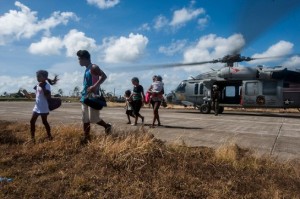 Climate change is a significant and lasting change in the distribution of weather patterns over periods of time ranging from decades to millions of years. What differentiates today’s changing climate is the fact that the Earth is warming at a faster rate than ever before and humans have played a major role in the change. Global temperatures are rising but this does not mean that every region is affected in the same way. This rise in temperature also does not mean that global warming and climate change are synonymous. Some regions of the world are experiencing extreme heat and droughts while others may be experiencing unseasonably cold weather. Temperature change is not the most severe aspect of climate change. It is also causing the ice to melt in the Arctic, droughts in the Sahel (south of the Sahara), wildfires, and concerns of energy shortage in the United States.
Climate change is a significant and lasting change in the distribution of weather patterns over periods of time ranging from decades to millions of years. What differentiates today’s changing climate is the fact that the Earth is warming at a faster rate than ever before and humans have played a major role in the change. Global temperatures are rising but this does not mean that every region is affected in the same way. This rise in temperature also does not mean that global warming and climate change are synonymous. Some regions of the world are experiencing extreme heat and droughts while others may be experiencing unseasonably cold weather. Temperature change is not the most severe aspect of climate change. It is also causing the ice to melt in the Arctic, droughts in the Sahel (south of the Sahara), wildfires, and concerns of energy shortage in the United States.
There are three core national security threats to the United States from climate change: global instability, military infrastructure and homeland security.
Climate change will cause global instability; these disruptions will burden civilian and military institutions around the world, including the U.S. military. According to the National Intelligence Council, by 2025 unprecedented economic growth, coupled with 1.5 billion more people will put pressure on the world’s resources – particularly energy, food, and water – raising the specter of scarcities emerging as demand outstrips supply. The near-term impacts of climate change will have a disproportionate effect on poor countries with weak governance structures, particularly in Africa and Asia. Over the next ten years, many states in these regions will experience water problems such as droughts, floods and overall poor water quality. Weak states risk failure or increased regional tensions from the inability to cope with sudden shocks (such as drought) and long-term stresses (such as decreased agricultural yield), as can be seen from the Middle East and many areas in Africa this will cause conflicts were the United States will be ask to if not compelled to be involved. In 2015 this is likely to increase.
Climate change poses costly threats to the United States’ military infrastructure at home and destabilizing threats to our international installations that hold strategic importance to the U.S. military. In order to prepare for these changes and to secure our military investments worldwide, the U.S. must invest in adaptation options that are effective and multidimensional. 2015 is likely to see a significant drain on already tight resources to adapt to this climate threat.
Climate change is not just a global problem, but also a threat to homeland security. A quickly changing climate will present threats to U.S. infrastructure, agriculture, economy and population. Climate change will therefore directly affect America’s homeland and the security of its citizens. This year’s extreme weather events illustrate that the impacts of climate change in the U.S. are much more complicated than a simple rise in temperatures. Each region will be impacted differently; understanding these regional consequences is important to policymakers because it will allow planning for response and adaptation. In 2015 the military will continue to be asked to respond to these events, which is not only costly but also takes resources away from countering international threats.
The rejection of the serious national, military and domestic risks from climate change will fundamentally damage American national security.
The U.S.- China deal in November on reductions of the gasses that are causing climate change was a major step in the right direction. Under the deal, the United States will cut emissions 26 to 28 percent below 2005 levels by 2025, while China agrees that its emissions will hit a peak and begin declining by 2030 at the latest, while also increasing its share of non-fossil energy to 20 percent in that same period. This deal will allow the world to take further steps in reductions.
November 2015 will see leaders from around the world gathering in Paris to negotiate an agreement that will stake out how the world will agree to reduce its emissions. This agreement, if reached, would be a fundamental step in enhancing national and global security.
5. American Competitiveness and Trade
 With the stock market at records high and the latest GDP report showing the biggest quarter growth in over 11 years, it would be easily to think that long-term sustainable growth in on its way. But in reality there are significant structural weaknesses in the U.S. economy – not least wage growth, education and taking the benefits for the global market place.
With the stock market at records high and the latest GDP report showing the biggest quarter growth in over 11 years, it would be easily to think that long-term sustainable growth in on its way. But in reality there are significant structural weaknesses in the U.S. economy – not least wage growth, education and taking the benefits for the global market place.
Over the last few years the American Security Project and Harvard Business School (HBS) have been working on seperate competitiveness programs, which have resulted in very similar conclusions. As Michael Porter and Jan Rivkin of HBS said in their 2013 Economist article “America’s success in restoringcompetitiveness will define the opportunities and economic mobility of American citizens as well as America’s influence in the world for decades to come.” This clearly can be seen as a key national security issue.
2015 could be seized by both parties and branches of government as an opportunity to fundamentally reform internal structural and competitive issues and also agree three major international trade issues.
Corporate tax reform will need to be taken seriously. Having one of the highest tax rates in the industrial world is starving inward investment as well stopping vast amounts of foreign earnings being brought back to the U.S. that could be added to the wider economy. Both parties will need to be seriously engaged in discussions on key principles and substantive points, this will mean hard work in creating consensus and supporting action.
In 2015 should mark the conclusion of the Trans -Pacific Partnership (TPP) between the United States and 11 other nations throughout the Asia-Pacific region. This will open up vast markets for U.S. goods and services. But this will only be finally completed, with the best possible agreement for the United States, when Trade Promotion Authority (TPA) is passed through Congress. TPA should start be introduced through Congress as soon as possible.
The year should also see further progress on the massive Trade and Investment Partnership (TTIP) between the United States and the European Union. In essence a strategic economic, investment, regulatory and geopolitical agreement, TTIP will create the largest economic area the world has ever known, and will firmly established liberal economics and democracy influence around the globe – by setting the “rules” for any further key economic and trade agreements.
Both the TPP and TTIP trade agreements present major opportunities to firmly establish America leadership and values across the globe and strengthen the economic and political bonds between strategic allies and partners.
Economic diplomacy and statecraft will also need further support in 2015. The Department of Commerce trade missions, the State Departments work in facilitating American businesses, OPIC, TDA and Ex-Im will all need further support from Congress. American investment across the globe expands U.S. values while also creating economic opportunities and strengthening indigenous economies, all of which enhance U.S. national security.
6. The Aftermath of Ebola and the Destabilization of West Africa
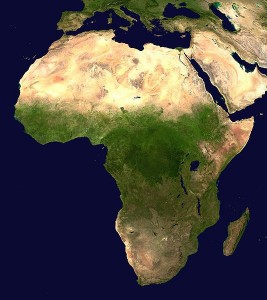 The Ebola crisis began with a case in Guinea in West Africa December 2013. By spring 2014, the World Health Organization was working to bring together an international response. But by the end of 2014, just a year after the outbreak began, the disease that has killed more than 8,000 people, and is still spreading. The World Bank released a study that estimated the total cost of the outbreak to West Africa could reach $33 billion—2.5 times the entire size of the three affected economies.
The Ebola crisis began with a case in Guinea in West Africa December 2013. By spring 2014, the World Health Organization was working to bring together an international response. But by the end of 2014, just a year after the outbreak began, the disease that has killed more than 8,000 people, and is still spreading. The World Bank released a study that estimated the total cost of the outbreak to West Africa could reach $33 billion—2.5 times the entire size of the three affected economies.
Boko Haram the violent extremist group based out of northeast Nigeria, has engaged in mass attacks and kidnappings, they have killed over 2,000 people in the first half of 2014 alone. The Nigerian government hasn’t been able to quell the insurgency, and in May 2014 the United States deployed a small group of military advisers to help find girls taken in a mass-kidnapping that April. The brutally of the group has often shocked the West, but as yet there is no concerted international response to defeat them
While seemingly unlinked, both these issues have created a vast area of destabilization, which has the possibility of feeding on itself and spreading – creating further wider and deeper instability.
The Ebola outbreak with the expansion of Boka Haram and its possible links to ISIS will have lasting economic, political and social effects all across central and North Africa. Not only will the brutally of Boka Haram engulf millions of people, the instability will bring in corruption and criminal gangs that many countries may not be able to counter for years. These groups will not just stay in Africa, sooner or later they will directly threaten U.S. interests and the Homeland.
2015 will need to see the United States and its European & Arab allies crafting and implementing a long-term strategic approach. In this the U.S. will need to take an enhanced leadership role. This will need to be based around three equally important pillars: security sector support; trade & investment; and, development.
African military forces and police services will need considerable support in implementing their missions. Two key aspects of security sector reform will need to be worked on throughout 2015. Indigenous militaries and police services will need to be supported in a sustainable long-term program. It is inappropriate for the U.S. or its allies to impose structures or provide equipment & training that cannot be sustained. Each country will need its own tailored support-programs, while ensuring interoperability within regional structures. While providing such support, the U.S. and its allies will also need focus on the civilian governance structures of military forces and police services.
Increase trade and investment by the United States in Africa will not only extend US influence & values it will also create economic growth and political stability in Africa. The Unites States has only a free trade agreement with one country in Africa – Morocco. A full trade and investment programs with all regions in Africa should be worked on in 2015. This can be taken in separate regions, our individual countries. It will be important in 2015 to set out the principals of what a free-trade agreement should consist of and how to increase US direct investments in Africa. These principles should not just economic and traditional trade issues, but also political governance & human rights framework issues, similar to the European Union “political criteria” for new members. These framework issues should not be an “all or nothing” approach, rather a step process allowing for political and economic transitions at a slower but more sustainable timeframe.
While increasing trade and investment is vital to increase economic and political development in many parts of Africa, so-called traditional development assistance will be an important element in lifting many parts of Africa out of poverty. This assistance should be focused on actions that create the bedrock for further economic growth that cannot be done on their own. These elements should include financial facilities to increase capital for infrastructure projects, capital and political risk management funds, and key energy and electricity projects to provide power both in the short-term and long term.
7. The Energy Future
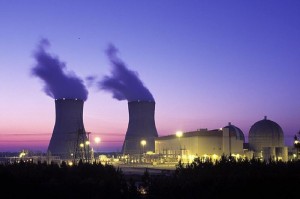 Energy is both a strategic -geopolitical challenge and an opportunity for the United States. As the global energy market transforms and new energy resources are found and commercialized in the U.S. energy security and the energy market will be very different in the coming few years compared with the last 50 years.
Energy is both a strategic -geopolitical challenge and an opportunity for the United States. As the global energy market transforms and new energy resources are found and commercialized in the U.S. energy security and the energy market will be very different in the coming few years compared with the last 50 years.
There are two key elements for the energy market in the U.S., first the energy needed for transportation (such as oil), and second energy that is needed to generate electricity (such as natural gas or solar power). While separate right now, with growing electric-car technology, the elements will be more mixed going forward.
With access to new supply resources and greater efficiencies in use, the U.S. energy position is very different today than what it was even five years ago. In 2015, policy makers in the United States will need to fully understand the new framework in order to take advantages of the opportunities but also mitigate the challenges.
Oil prices are nearly 50% off their peak for the year, at around $60 a barrel (Brent). The geopolitical consequences of a lower price on oil have already greatly affected Russia, Iran and Venezuela, which may present an opportunity for more Western leverage with those nations, if this is sustained if will also have significant negative effects on countries such as the UAE, Kuwait, Iraq, and the North Africa region.
While this lower oil price has significantly reduced the price of gas for American consumers, with the rise in more efficient engines this lower gas-price will have less overall direct effects on the U.S. economy that has in previous low-price periods; at the same time lower prices negatively affect key oil- & gas production areas in the United States.
If policy makers just focus on the upside of lower prices, they will miss the significant challenged they pose to U.S. domestic production, as so long term US economic growth and stability.
In the power generation element the key challenges arrives for a sustainable fuel that provides base-load power while not contributing to the effects of climate change. The opportunity arises from the mass re-capitalization needed in the generation industry, as almost every generation power-plant will need to be replaced within the next 50 years.
This investment in the future could create strong sustainable economic growth matched with climate requirements. As a bridge to a carbon-free generation economy, wider use of American natural gas as a generation source should be matched with a network of renewable sources (such as solar and wind) to provide highly efficient and effective low-carbon power.
To ensure a level price for U.S. natural gas, that created efficiencies but also a wide market base for supply, in 2015 and going forward there should be a wide increase in exporting Liquid Natural Gas (LNG). This would also have the added benefit of creating LNG markets for American companies, while loosening the strangle hold present exporting countries have on their customers. Serious thought should also be given exporting crude oil so as to support the U.S. domestic industry.
To fully secure US dominance in energy it is vital that policy makers support science and the wider application of scientific discoveries. For increases in non-carbon baseload power, it will be key for the United States to step up its support for nuclear fission power plants, including the replacement of present older nuclear infrastructure as well as seriously take forward nuclear fusion. With a wide sustainable program over a 10-year time frame, bring in both government and private capital; the Unites States could capture the benefits of fusion power (fusing elements with little or no nuclear waste), creating the next spurt in energy and economic growth.
The new global energy economy will need vision and leadership for American to work through the challenges and take the opportunities it offers. 2015 could be a point were both parties, Congress and the Administration ones together to set out that vision and take the leadership need to secure a strong America.
8. The South Asia Conundrum
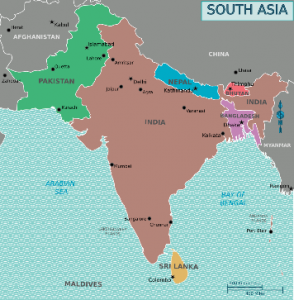 South Asia presents a mixture of vast challenges and opportunities to the United States. The region compromises of over 1.7 billion people, with many different ethnic groups & religions, over the last few years the Unites States has had a vast military presence, confronted Al Qaida and other related terrorist groups, worked to deescalate tensions between two nuclear-armed nations, worked to increase business investments all over the region, as well as trying to help countries with key political structural problems.
South Asia presents a mixture of vast challenges and opportunities to the United States. The region compromises of over 1.7 billion people, with many different ethnic groups & religions, over the last few years the Unites States has had a vast military presence, confronted Al Qaida and other related terrorist groups, worked to deescalate tensions between two nuclear-armed nations, worked to increase business investments all over the region, as well as trying to help countries with key political structural problems.
In 2015 the United States will have to manage these competing interests in a vastly changing environment.
Afghanistan in 2014 saw a new President being inaugurated under a political agreement to appoint a government “CEO” and also refocusing U.S. and NATO troops into a support role to Afghan forces fighting terrorist groups and their support from the Taliban insurgency. Late in 2014 the U.S. announced that some of its forces would also be used in direct engagement against insurgent forces.
Both the politically and military situation in 2015 will remain fragile. The political agreement between President Ghani and CEO Abdullah has still not resulted in a Cabinet and is predicated in an overhaul of the Constitution, competing forces with the political establishment, and the powerful internal regional plays may force the collapse of the agreement. At the same time, the Taliban insurgence has increased in tempo over the last few months, with more areas falling outside the control of state structures. The United States will need to evaluate if present policies are working in Afghanistan, and if further political and military engagement will be required.
At the end of 2014 Pakistan saw a devastating terrorist attack in Peshawar with the massacre of children at an army school. This shocked the nation and its political leaders to put aside short-term considerations, to examine the strategic failure of the country to tackle violent extremists. While the government of Nawaz Sharif saw major economic reforms, Pakistan still needs vast structural reforms and infrastructure investment. If the political consensus remains over 2015, and the key Pakistan state institutions fully commit to eradicate all types of violent extremists throughout the country, the United States should work with its international partners to support the Pakistan economy and work increase in large investments into Pakistan’s infrastructure requirements.
The election of Prime Minister Modi in 2014 renewed the U.S. –Indian relationship, and moved it towards further economic and trade ties. Modi made a successful visit to the U.S. in late September 2014, meeting leaders of both parties and attended a vast rally in New York. Modi’s government has engaged on wide range of economic reforms, some of which have gone against ingrained political interests, in late 2014 this included executive orders (over Parliamentary objections) for reform of the coal and insurance market). 2015 should see that economic reform continue, although there are key political and international issues that remain to be problems for the government. The hardline Hindu nationalists in the India parliament could cause further trouble for Modi and relations with the U.S. as they push for conversion to Hinduism. India’s relationship with China, especially regarding the north-east boarder issues, may cause destabilization in the region, and work will need to be continued to resolve key issues such as the boarder, water management, impacts of climate change, as well as China’s work on a number of deep water ports surrounding India. Over 2015 the United States will need be mindful of the internal political dynamics of India, at the same time increasing business and economic ties, while supporting the democratic structures of India. Thought should also be given to deepening military ties, at the same time work to reduce tensions between India and Pakistan.
Bangladesh has a larger population than Russia, where political, environmental and security instability grew throughout 2014. The January 2014 general Election failed to resolve key political issues when the main opposition group boycotted the election when the ruling the Awami League was assured of victory, with its candidates declared victors in 127 of the 154 uncontested seats by default. 2014 saw growing violence, with many reports of growing ISIS infiltration of Madrassas and religious groups as well as a political crackdown by the government. In 2015 the United States will need to work with all political parties as well as the Bangladesh security services to move towards an open, free and fair election, as well as strategies to rid Bangladesh of violent extremists and set it on a path to political and economic growth & stability.
9. The Next Space Challenge
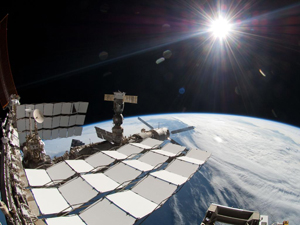 In national security terms two key elements came together in 2014 regarding our space programs. First was the realization that the United States has been funding the Russian rocket & missile industry through its purchase of the RD180 engine ; and second the consequences for U.S. space systems with the 2007 demonstration that individual satellites can be shot down from the ground.
In national security terms two key elements came together in 2014 regarding our space programs. First was the realization that the United States has been funding the Russian rocket & missile industry through its purchase of the RD180 engine ; and second the consequences for U.S. space systems with the 2007 demonstration that individual satellites can be shot down from the ground.
While seeming different issues, the reliance on single large one-off type satellites means that the U.S. has to use large rockets with the RD180 engine. In turn these type of satellites would have significant national security implications if they were shot down or otherwise rendered inoperable.
The DOD relies on Russia’s RD-180 main rocket engine to power the Atlas V rocket, part of a joint venture program between U.S. companies contracted to send America’s most secret satellites into orbit. The liquid propulsion RD-180 engine is manufactured by Russia’s NPO Energomash, which is essentially state owned. Even as Russian forces lock down the Crimean peninsula, the Air Force is currently counting on an Atlas V rocket powered by the RD-180 for its latest launch of a classified National Reconnaissance Office satellite.
With the reliance on satellite systems ever growing, mainstay technologies used by U.S. armed forces today, including satellite-guided munitions dependent on GPS coordinates and unmanned aerial vehicle control, must be reliable. Measures such as keeping dormant GPS satellites in orbit in case an urgent replacement is needed are one step currently in place to ensure uninterrupted service. In the context of a large-scale conflict, even those spares could be overwhelmed, particularly if they are also targeted by an adversary.
An asymmetric-minded adversary needs to only degrade or disrupt the capabilities of a communications satellite, such as nudging it out of orbit or inducing its operator to burn out its fuel source with repeated maneuvers, to render it unusable 2 Collisions or deliberate debris clouds, let alone ground-based anti-satellite weapons such as missiles, are also a threat.
2015 will need new critical thinking from the DOD, engaging with key Congressional committees, to determine how to change the space apparatus for smaller interoperable assets, while using American private sector capabilities. It will also be important for DOD to use private sector assets already available, rather then spend taxes-payers money to develop one-off systems that have caused these problems in the first place.
10. Leaving Behind the Ancien Regime
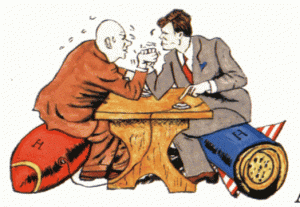 As we approach 25 years since the end of the cold-war, we have seen during that time we had seen military action in the Balkans, East Africa, Afghanistan and Iraq (a few times in fact). Most of these conflicts have not resulted in decisive victory and while there have been tactical victories; the strategic picture is more murky.
As we approach 25 years since the end of the cold-war, we have seen during that time we had seen military action in the Balkans, East Africa, Afghanistan and Iraq (a few times in fact). Most of these conflicts have not resulted in decisive victory and while there have been tactical victories; the strategic picture is more murky.
The national security apparatus built for the challenges of the Cold War is still very much in place, and many of the weapons and strategy is still focused on deterring the Soviet Union. Putin may well want to hark back to the Soviet days, but the United States can no longer afford both in monetary , military and strategic terms not to change.
Our ballooning nuclear weapons budget with over 1,500 strategic weapons is ill suited for modern deterrent needed. Many of our large military infrastructure and assets are highly venerable to asymmetric threats; old style weapon platforms are not adequate for the modern needs that are required.
More importantly, our strategy of large scale on-the-ground longer-term action and stability operations has left indigenous populations feeling alienated and destabilized local politics settlements.
The National Security Council has become bloated – under Administrations from both parties- the State Department, Department of Defense, Department of Commerce, Department of Homeland Security and many other agencies have widely overlapping responsibilities with unbalanced budgets. This is matched with mixed Congressional oversight, with many committees with mix responsibilities, some issues have too much oversight, others none.
This has not just led to inefficiencies and ineffectiveness – it has created an America that is unprepared to face the challenges in the next 25 years. And this unpreparedness may cost us dear.
2015, with both Republicans and Democrats in leadership positions and two years away from the inauguration of the next president offers an opportunity for some new-style strategic thinking – to turn our national security apparatus, weapons systems, and strategic platforms to what we need.
This will need a concerted effort by both pillars of government and by both parties. Its time to ride ourselves of this ancien regime – and secure our American future.






[…] 10 Key National Security Challenges in 2015 Paul Hamill The United States and its allies are going to face a variety of challenges on the international stage in 2015, many will take forward the situations that arose in 2014, but others are long-term strategic issues. Here are 10 key challenges for 2015. […]